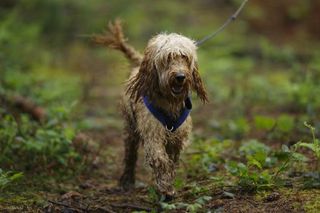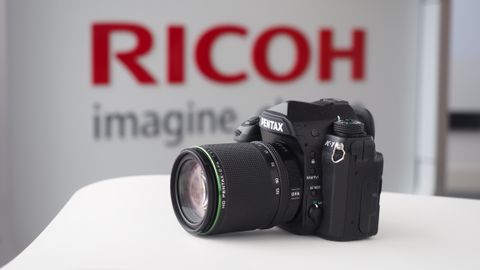Why you can trust TechRadar
We've been impressed with the quality of images from Pentax's recent SLRs, which strike a good balance between detail and noise visibility, and on the whole the K-1 maintains that standard. Low- to medium-sensitivity images have lots of detail, with fine-textured noise building up towards the higher ISO values. The results at ISO6400 are very good, with lots of detail and little noise. Detail levels start to slide at around ISO25,600, but the images are still decent.
Even the results at ISO102,400 and ISO204,800 are okay, but they look more like the results of expansion settings than native values. At a relatively small size on-screen some darker areas are badly smudged, and elements in the JPEGs have a slight diffuse glow. Step down to ISO51,200/25,600 and there's a marked improvement – images look pretty good at A3 size, with just a fine texture of luminance noise visible in raw and JPEG files.

Click here for the full-resolution image

Click here for the full-resolution image

Click here for the full-resolution image
Colour-wise the K-1 produces vibrant images at the default settings. As usual there's an option to boost the saturation of JPEGs if you like, but I suspect that most K-1 users will prefer to process the raw files to get things looking just as they want them. Nevertheless, it's nice to be able to give JPEGs a bespoke look, and I like the results that are produced when saturation is reduced and contrast boosted in-camera.
As with the K-3 II, there's a boost to detail resolution and an improvement in colour gradation when the K-1's Pixel Shift Resolution system is employed, but it's only just visible in images viewed at 100%. The impact is subtle, and there's a significant boost in file size (but not image size), with raw files typically jumping from around 43MB to 155MB.

Click here for the full-resolution image

Click here for the full-resolution image

Click here for the full-resolution image
As promised by Pentax, activating the Motion Correction option enables both handheld shooting and the capture of scenes containing moving objects. Without Motion Correction the moving water of a river is flecked red, green and blue, but with it the water looks natural.
I shot a wide range of subjects during my testing, and I didn't come across any instances when I needed to use the AA filter simulator system.

Click here for the full-resolution image
Click here for the full-resolution image

Click here for the full-resolution image
Pentax cameras and lenses aren't the natural choice of sports photographers, as they're not known for their automatic focusing speed. With the right lens the K-1's AF system can be pretty snappy, but it can't keep up with children moving around quickly, or a bounding dog. I shot several sequences of images of a dog running towards me, and even though the active focus point was on the dog's face, the sharp point is further down its body – if the dog slowed to a walk the K-1 was able to keep up.
Switching to live view mode, the contrast detection system delivers a typical non-hybrid focusing SLR experience – it's slow, and adjusts backwards and forwards before settling on the target. Anyone shooting video is advised to stick with manual focusing if they need to adjust focus during recording.

Click here for the full-resolution image

Click here for the full-resolution image
In other respects the K-1 produces high-quality video footage, with good detail levels and pleasant colours.
The K-1's Multi-segment metering system can be a little unpredictable – in some instances it produces perfect exposures with no intervention, but on other occasions fairly extreme exposure adjustment is required. When shooting a peacock against a background of sunlit grass, for example, I found I had to dial in +1.7EV compensation to get the bird anywhere close to correctly exposed; even switching to centre-weighted metering didn't solve the problem.

